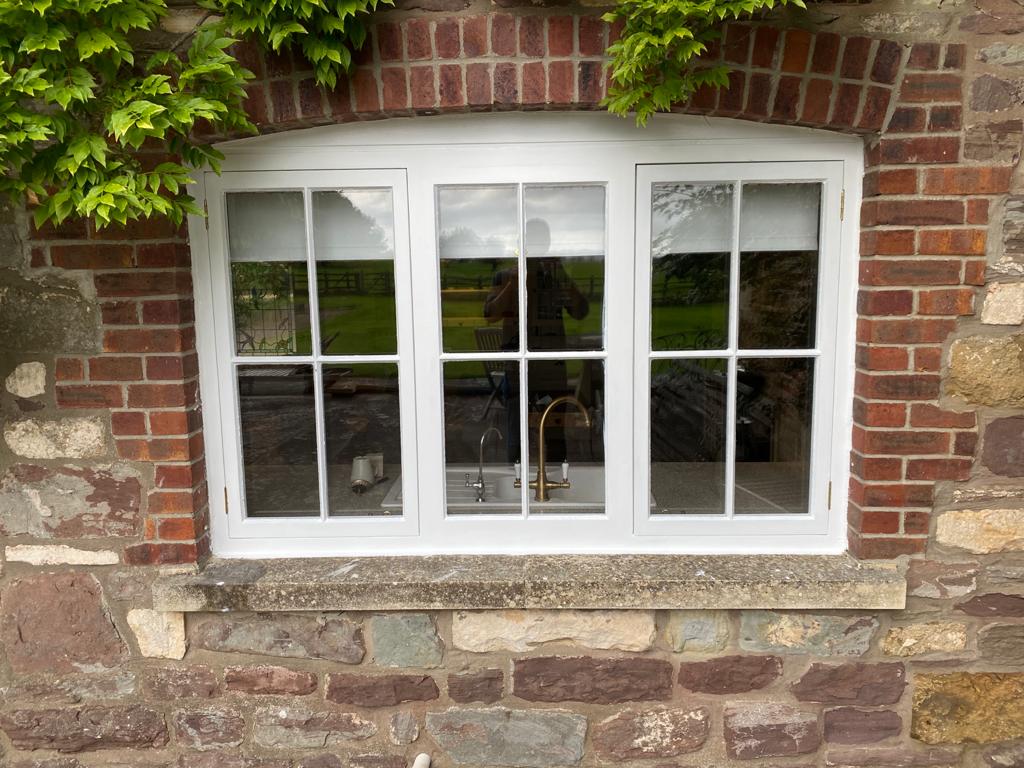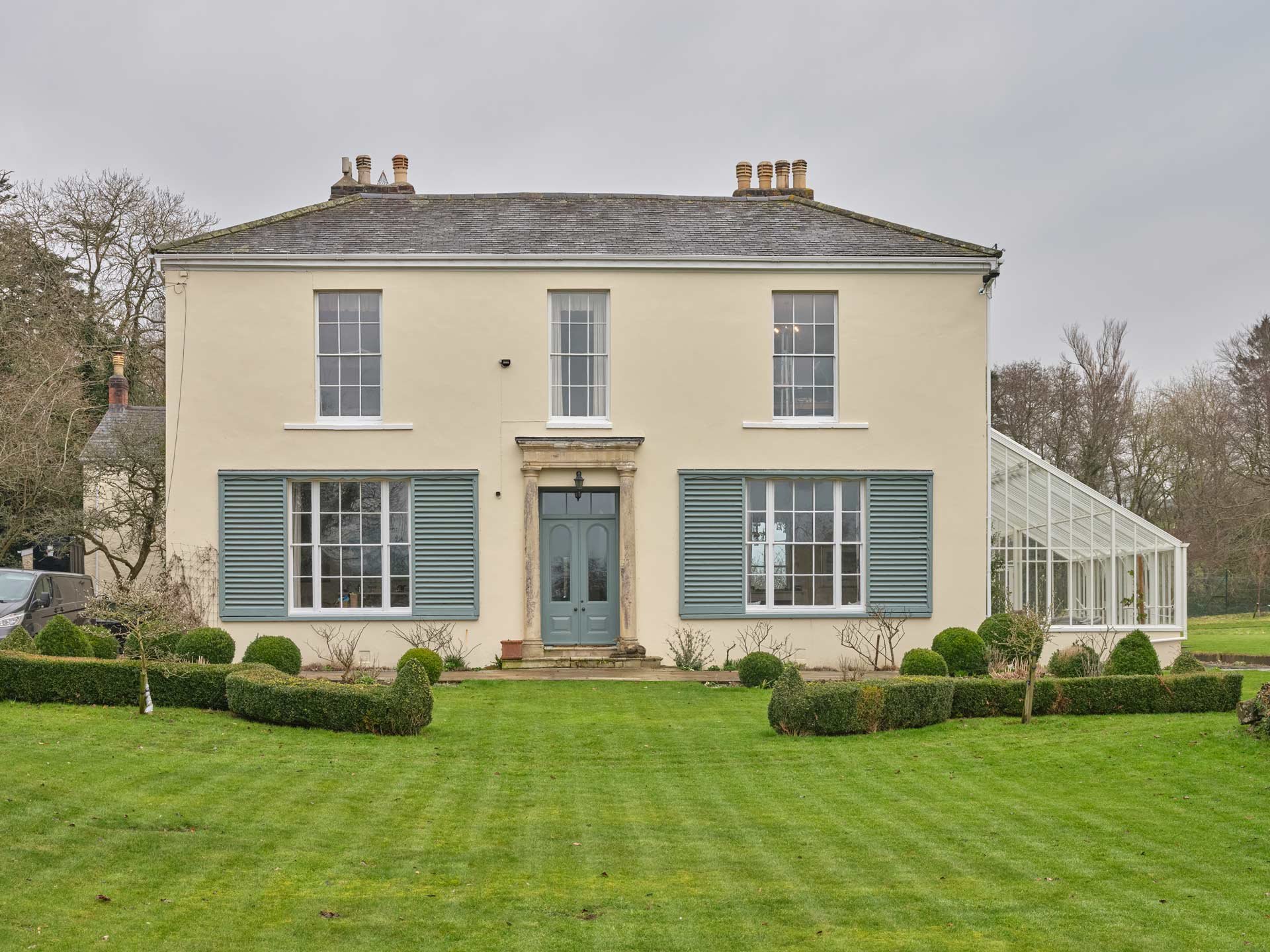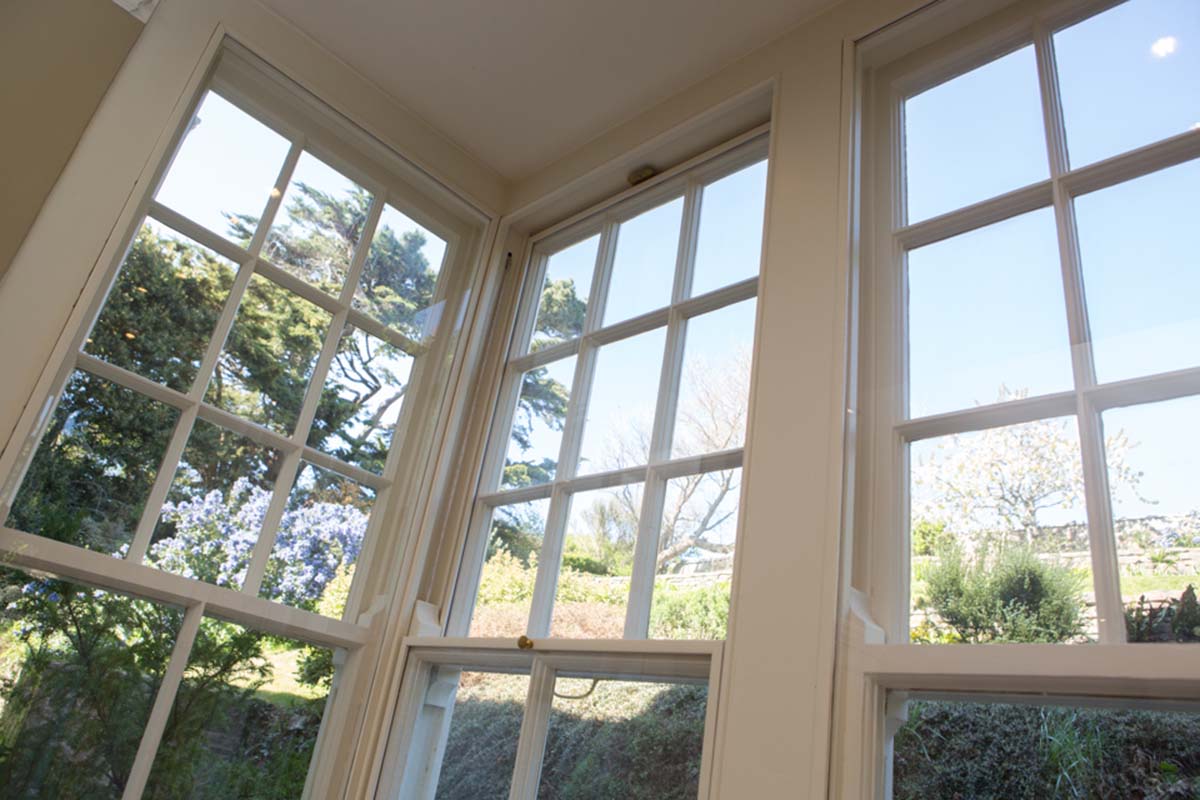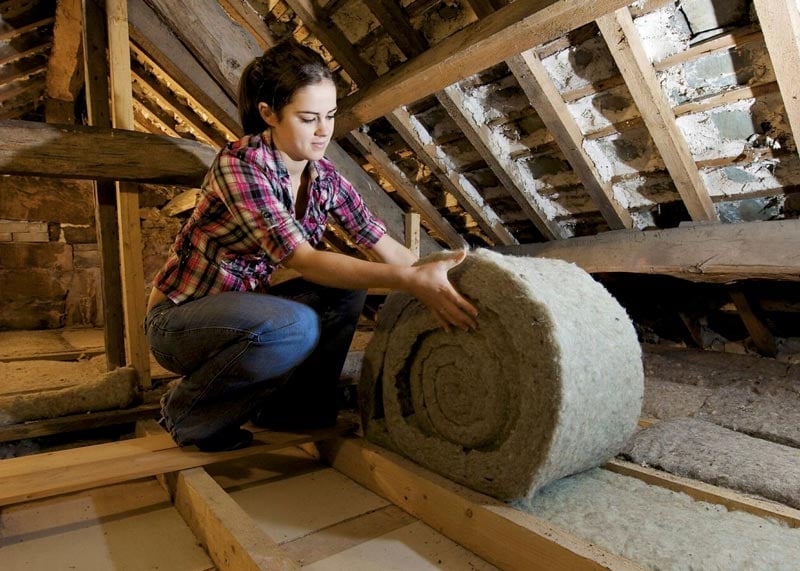Award-winning author and sustainability expert Roger Hunt explains how secondary glazing boosts insulation in older properties while retaining their historic integrity.
When it comes to heat loss in old buildings, windows are among the biggest culprits. Not only are they draughty around the moving parts but the glass itself acts as a significant thermal bridge due to its high thermal conductivity. These factors result in higher energy bills, condensation, mould and discomfort. The temperature asymmetries close to poorly performing windows mean we tend to move away to stay warm and avoid losing body heat. As a consequence, the usable space within a room is reduced.

At one time, these issues were simply endured and, to a degree, mitigated by using heavy curtains or shutters. Today, the cost of heating homes and the climate emergency means more efficient solutions are needed. The addition of supplementary or secondary glazing to the inside of existing windows is seen increasingly as the most cost-effective, least damaging and non-intrusive answer to improving energy efficiency when dealing with old windows.
Secondary glazing not only minimises the risk of compromising the historic integrity of a window but has the added potential to provide acoustic insulation and security. Creating an insulating air gap, its overall thermal performance can be as good as or better than double glazing, reducing heat loss by up to 70%.
Clunky and ugly secondary glazing is generally a thing of the past, superseded by innovative, aesthetically pleasing systems that are easy to install and use. Even so, there is plenty to think about. At its most basic, secondary glazing adds an extra pane of glass or plastic to the inside of the window; this may be fixed, sliding or integrated to move with the window. It is sometimes removed and stored during the warmer months of the year.

Fixed secondary glazing
Normally installed over both the window and its frame, fixed secondary glazing is ideal where windows do not need to be opened and a high degree of air tightness and acoustic insulation is required. Access to the window itself is limited except for occasion maintenance, so a fixed system is not suitable where ventilation or an escape route in the event of a fire is required.
Proprietary systems often employ a bespoke light-gauge aluminium frame. This may be powder-coated with a finish that complements the interior decoration of the existing window. The units can have a subframe which is screw-fixed and mastic sealed to the window frame or be fixed in conjunction with a magnetic system. Alternatively, a wooden frame may be made up by a joiner, most often of oak or a modified timber such as Accoya. The frame must be dimensionally stable, as any distortion will result in air leakage. As wooden sections tend to be larger than those of aluminium, they are invariably more visually intrusive and may require substantial fixings that can be damaging to the building’s fabric.
Another option that lends itself to fixed installation is plastic glazing held in place with magnetic tape. It provides a quick, lightweight, cost-effective solution and is particularly suited to difficult to access windows. It is easy to remove for cleaning and maintenance.
Opening secondary glazing
Secondary glazing units that can slide either horizontally or vertically are versatile. They offer a good balance between improved energy efficiency and comfort and the need for ventilation and easy maintenance but tend to be less discreet than fixed systems.
Highly bespoke, the units are generally manufactured of light-gauge aluminium. To be visually acceptable their structural elements must be as slim as possible and match exactly with the meeting rails or mullions of the window with which they are paired.
An alternative opening system utilises a hinged casement that opens inwards. Offering good ventilation and a means of escape if required, these units can appear cumbersome and not in keeping with a historic interior, especially when open.
Integrated secondary glazing
Virtually invisible, integrated solutions, like CosyGlazing from Mitchell & Dickinson, enable windows to be opened and closed as originally intended. Although removable for cleaning and maintenance, no additional frame is required.
The CosyGlazing system employs plexiglass fixed with magnetic tape. It is fully integrated with the windows which are reengineered and draught-proofed. Draught proofing is essential because, unlike many fixed or opening systems, the secondary glazing does not cover the junctions between the window and the frame.
Integrated secondary glazing works with all types of windows, whatever their shape and size, and can be used on stone mullions. During the installation ironmongery and catches are modified to work with the system.
DIY secondary glazing
A wide variety of secondary glazing kits are available online for DIY installation. The easiest to install are fixed plastic sheets held in place with magnetic tape. Others use aluminium or plastic bars and tracks to hold plastic or glass glazing sheets, enabling horizontal or vertical opening.
As window frames in old houses are rarely perfectly square, it is essential to measure accurately when ordering. With awkward shapes, creating a template to send to the supplier may be advisable.
Glazing types
With glass secondary glazing, toughened safety glass should be standard. In some cases low-emissivity (Low-E) glass, which has a special coating that improves the thermal efficiency of the glass by reducing heat transfer, is employed to enhance energy efficiency and help lessen overheating from solar gain.
Acrylic glazing options such as plexiglass provide distinct advantages over glass and have become popular due to their lightweight, durability and versatility. Plexiglass is seven times more effective as an insulator than glass; both plexiglass and polycarbonate are fire-rated. Plexiglass is stronger but softer than glass so can be scuffed by abrasives, although scuffs may be polished out.
Magnetic tape
Adhesive magnetic tape is widely used to hold secondary glazing in place. The tape – typically 12 mm to 20 mm wide – is attached to the edges of the double-glazing panel. A second strip of magnetic tape, or in some cases a steel tape, is bonded to the frame or, in the case of integrated systems, to the sash or casement itself. It is vital that the polarity of the two magnets is aligned correctly.
Using magnetic tape has the advantage that screws or other fixings that involve drilling into the substrate are avoided, minimising damage to the window frames. The secondary glazing may easily be removed during the warmer months or for cleaning, leaving only the magnetic tape in place on the window frame.

Maintenance and performance
All systems require both the secondary and original panes of the glazing to be periodically cleaned, as well as the void in between. How regularly will depend on local conditions. With opening systems, the tracks or hinges may need to be lubricated periodically.
The longevity of secondary glazing will, to a certain extent, depend on how it is treated. Abrasion and over-vigorous cleaning will almost certainly have an impact on some plastics. Warrantees and life expectancy claims vary and should always be checked – CosyGlazing has a design life of at least 30 years. The overall effectiveness of any system will depend on how well it is detailed and installed. It is worth remembering that the needs of the various windows in an old house may vary significantly so, within one building, a range of secondary glazing solutions may be required.
Roger Hunt is the co-author of the bestselling Old House Handbook and the companion volume Old House Eco Handbook, both are now in their second edition. He is also co-author of New Design for Old Buildings from RIBA Publishing. All three books are published in association with the Society for the Protection of Ancient Buildings (SPAB).










